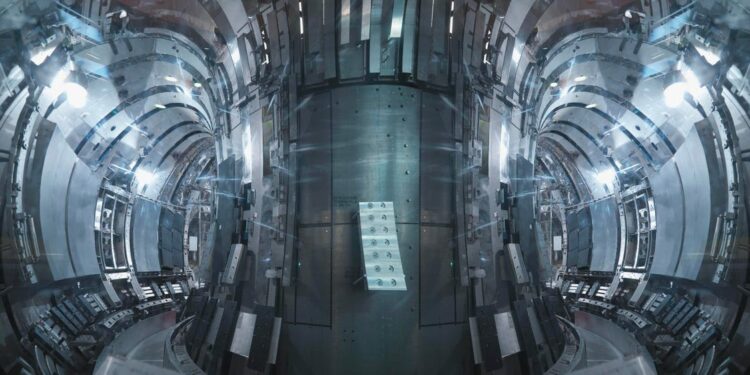Looking to harness the energy that powers stars, fusion companies are facing very terrestrial challenges.
By Mark Druskoff and Nate Trela
Man-made fusion was demonstrated by the explosion of the first H-bomb nearly 70 years ago but harnessing the energy source that makes stars shine for more practical purposes – specifically, carbon-free, low radioactivity baseload power – has been frustratingly out of reach.
Advances in technology, however, mean the hurdles facing fusion power start-ups are growing increasingly mundane. Emerging companies are focused on raising capital, developing strong business models and shaping the regulatory framework. Boring? Yes, but a definite sign of progress.
Until November, private fusion power companies collectively had raised $2.3 billion over their history, said Matthew Moynihan, a technical consultant to investors through his firm, NLF Consulting. That total nearly tripled in November, when the industry saw a series of mega raises. Cambridge, Massachusetts-based Commonwealth Fusion Systems announced a $1.8 billion fundraise. Everett, Washington-based Helion Energy announced a $500 million round with a further committed $1.7 billion, and British Columbia, Canada-based General Fusion announced a $130 million round.
“Every serious firm will get capital,” said Moynihan, who noted that investors have been increasingly aggressive about getting into the space. The Fusion Industry Association lists 23 fusion companies worldwide in its most recent 2021 survey, 14 of which are headquartered in North America.
General Fusion CFO Greg Twinney said strides in 3D manufacturing, advanced computing and machine controls have helped enable much of the past decade’s progress, noting that it was impossible to produce and test some components and concepts without them.
“Now investors are able to see it is a real and viable investment,” he said.
Advances by fusion power companies are also creating near-term business opportunities apart from developing power plants, said Moynihan. Innovations like Commonwealth Fusion Systems’ superconducting technology have applications in a wide range of fields beyond fusion.
In September, TAE Technologies CEO Michl Binderbauer told Mergermarket that cross-licensing between his company and Commonwealth Fusion Systems could make sense because better magnets could help make his reactors more compact. Meanwhile, TAE Technologies could look to license its own technology to other fusion power companies, Mergermarket previously reported.
TAE Technologies already has spun off TAE Life Sciences, targeting healthcare applications of its particle accelerator tech and could spin out its power management division. The company has also developed technology for directly converting soft x-rays into electricity in a process somewhat analogous to solar photovoltaics, which Binderbauer described as particularly promising.
Other companies, such as Wisconsin-based SHINE Technologies, have opted to pursue near-term applications of fusion technology, focusing on medical isotope production and industrial inspection. Last June, the company bagged $150 million in a Series C-5 round led by Koch Disruptive Technologies.
While funding is falling in place, regulations need to follow. Few countries around the world have regulations regarding fusion reactors, said Amy Roma, partner with the law firm of Hogan Lovells. France has the most extensive framework because it hosts ITER, the world’s largest fusion experiment. ITER is regulated more along the lines of standard nuclear fission reactors, but Roma noted it is a very large facility that bears little resemblance to the facilities envisioned by fusion power enterprises.
Existing US regulations should be adequate for prototype plants planned by companies such as Helion and Commonwealth Fusion Systems, expected to be in operation by 2024-25, said Roma. The Nuclear Regulatory Commission is more interested in regulating the stage in development that comes after those demonstration plants. The 2019 Nuclear Energy Innovation Modernization Act directed the NRC to come up with a regulatory framework for fusion by 2027.
General Fusion’s Twinney said from a CFO’s perspective, fusion regulation can’t be as complicated and time-consuming as the process for approving fission reactors if the industry is going to scale quickly to meet demand for carbon-free energy. Nor should it be, he added.
“We don’t have long-lived waste, you can’t create a weapon out of it and there’s no chance for an accident,” Twinney said. “We don’t have the same levels of risks at all as fission. We just have to make sure people understand that.”
Mark Druskoff covers the North American energy sector for Mergermarket. He can be reached at mark.druskoff@iongroup.com.
Nate Trela covers the energy sector and general business in the Rocky Mountain region for Mergermarket from Denver. He can be reached at nate.trela@iongroup.com.











